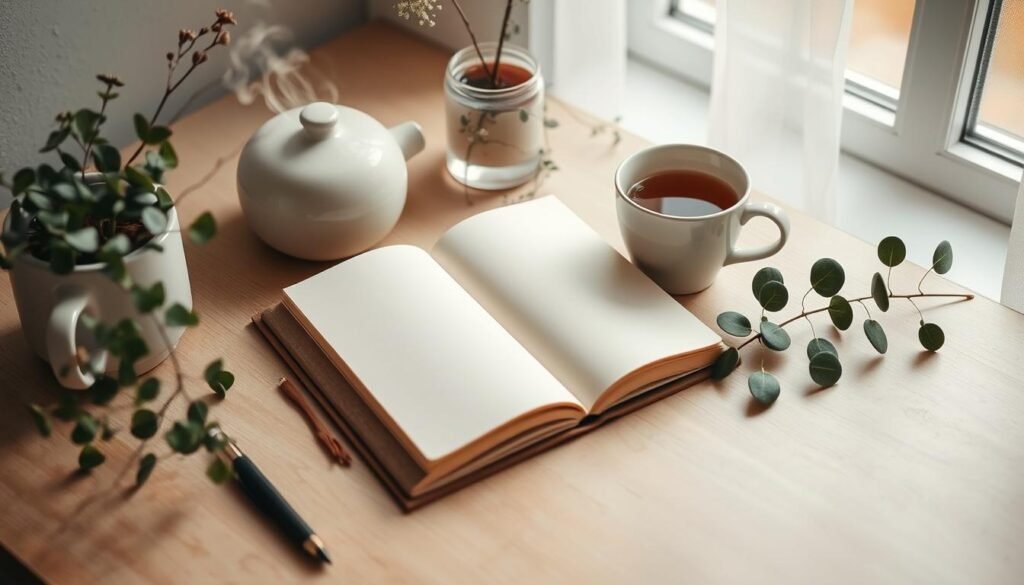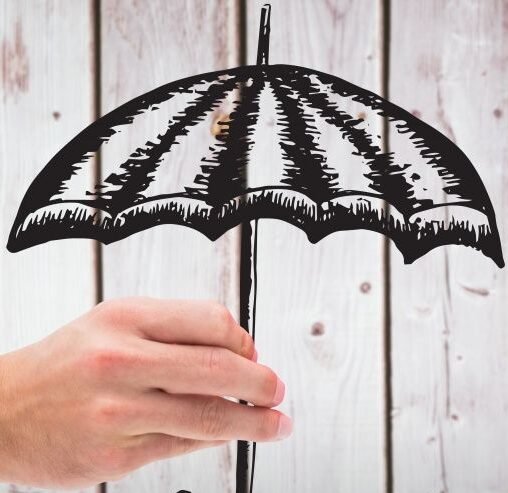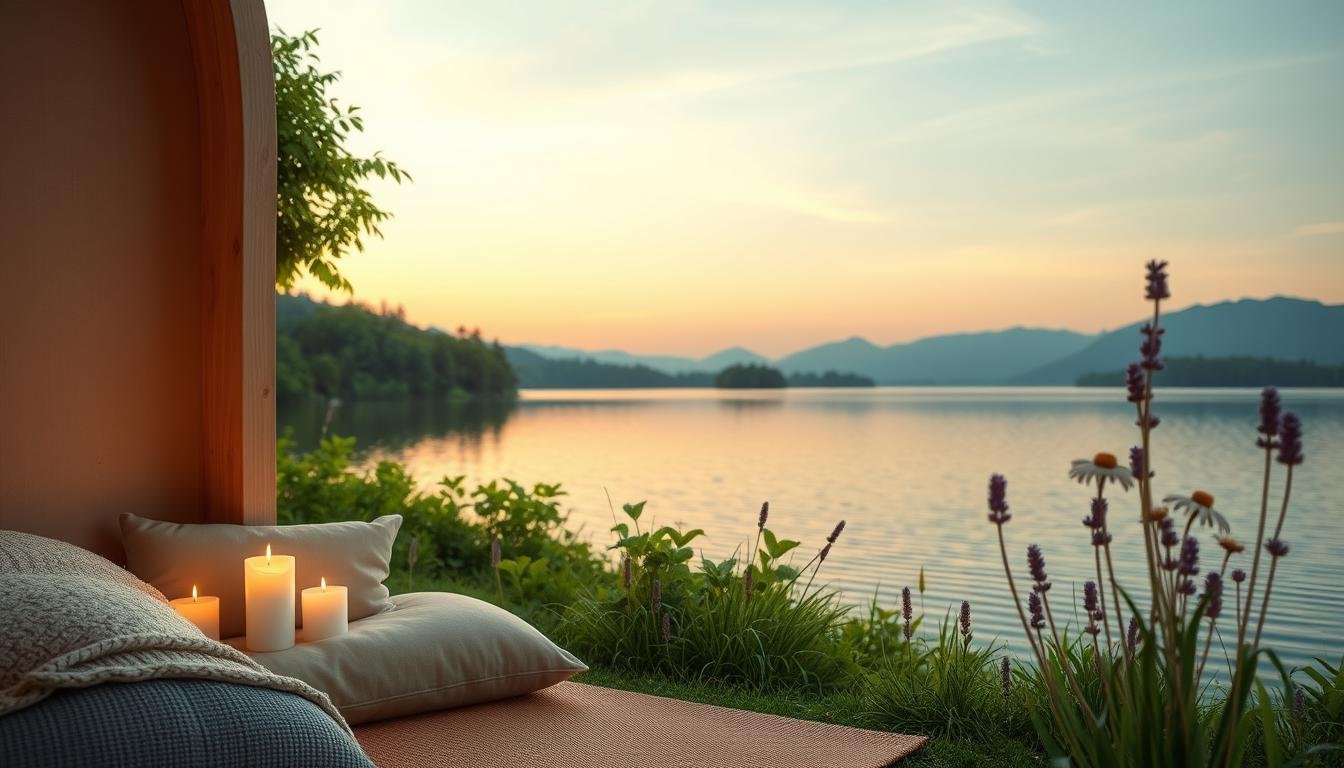Did you know that nearly 77% of adults experience physical symptoms caused by stress? This staggering statistic underscores the critical need for effective relaxation techniques. In today’s fast-paced world, stress relief transcends being a luxury; it is a necessity for maintaining overall well-being. By integrating mindfulness exercises and self-care tips into your daily routine, you can foster a sense of peace and tranquility in your life.
This article delves into various relaxation techniques, each crafted to combat stress and promote mental health. From meditation and deep breathing exercises to the calming effects of aromatherapy, practical approaches abound to alleviate stress. Discover how these methods not only enhance relaxation but also elevate your overall quality of life. For a more in-depth exploration of relaxation methods, refer to this comprehensive guide on relaxation techniques.
Key Takeaways
- Understanding the significance of relaxation techniques in combating stress is crucial.
- Incorporating mindfulness exercises into your routine fosters mental clarity and relaxation.
- Self-care tips play a vital role in achieving and maintaining stress relief.
- Various methods exist, each providing unique benefits for different individuals.
- Regular practice of relaxation techniques can lead to long-term improvements in mental health.
Understanding the Importance of Relaxation Techniques
Relaxation techniques are vital for maintaining mental health in our fast-paced world. The body’s stress response can lead to physiological changes, impacting overall well-being. Regular use of these techniques alleviates tension and offers significant mental health benefits, enhancing resilience against stress.
Why Relaxation Matters for Mental Health
Incorporating relaxation into daily routines enhances emotional clarity and stability. These practices reduce anxiety and dread, often associated with stressful situations. Beyond immediate calmness, they promote profound peace, improving emotional intelligence and coping abilities.
The Science Behind Stress Relief
Research demonstrates the science of stress relief, highlighting the benefits of relaxation techniques. Studies show that deep breathing and meditation lower cortisol levels, a stress indicator. Understanding these mechanisms underscores the importance of relaxation in managing well-being. For more on relaxation and health, visit this resource.
Popular Relaxation Techniques to Consider
Incorporating popular relaxation techniques into your daily routine can significantly enhance your overall well-being. Below are a few effective methods to help you find calm and relieve stress. Each technique offers unique benefits and is easy to adapt to your lifestyle.
Meditation: A Path to Inner Peace
Meditation practices serve as a powerful tool for achieving inner peace. This technique can encompass various forms, such as guided or transcendental meditation, allowing individuals to explore what resonates most with them. Through regular meditation, one can experience improved focus, emotional health, and a deeper connection to themselves.
Deep Breathing Exercises and Their Benefits
Engaging in deep breathing can lead to substantial relaxation benefits. Techniques like abdominal breathing promote optimal oxygen flow, reducing stress levels and enhancing mental clarity. Implementing a few minutes daily of deep breathing can shift your focus away from stressors and create a sense of tranquility.
Progressive Muscle Relaxation for Tension Relief
Progressive muscle relaxation is a method that targets physical tension effectively. By systematically tensing and relaxing different muscle groups, individuals enjoy relief from both mental and physical stress. This technique encourages greater awareness of bodily sensations and reduces overall anxiety levels. Whether at home or in the workplace, it is easy to practice and can lead to enhanced physical well-being.
These popular relaxation techniques—meditation, deep breathing, and progressive muscle relaxation—are accessible and can significantly contribute to a more relaxed and balanced life. Integrating just a few moments of these practices into your day may pave the way for a peaceful mind and a healthier lifestyle.
Mindfulness Practices for Everyday Life
Integrating mindfulness into daily routines enhances awareness and relaxation. By focusing on simple actions, individuals can transform mundane moments into opportunities for everyday mindfulness. Engaging in activities with intention can significantly improve well-being and reduce stress.
Incorporating Mindfulness into Your Routine
To cultivate mindfulness throughout the day, consider these practical strategies:
- Mindful Eating: Take time to savor each bite, paying attention to flavors, textures, and aromas.
- Focused Breathing: Dedicate a few minutes daily to deep breathing exercises, allowing yourself to reconnect with the present moment.
- Mindful Commuting: Whether walking, biking, or using public transport, pay attention to your surroundings and your body’s sensations.
Benefits of Mindful Walking
Mindful walking offers unique advantages that enhance personal and environmental connections. This practice encourages individuals to engage fully with their surroundings, fostering awareness of nature and self. Benefits include:
- Stress Reduction: By focusing on the rhythm of your steps and breathing, stress levels can significantly decrease.
- Enhanced Awareness: Mindful walking sharpens observational skills, leading to a deeper appreciation of natural beauty.
- Improved Physical Health: Engaging in mindful walking promotes not only mental clarity but also physical fitness.
Physical Relaxation Techniques
Delving into physical relaxation techniques reveals avenues to a serene mind and body. Yoga for relaxation and Tai Chi emerge as pivotal methods, enhancing serenity and overall well-being.
Yoga: Combining Movement with Relaxation
Yoga seamlessly merges physical activity with conscious breathing, acting as a potent stress reducer. It encompasses various styles, each tailored to different needs. Hatha yoga focuses on building strength and flexibility through precise poses. Conversely, Restorative yoga promotes profound relaxation by prolonging poses and utilizing props. These approaches not only enhance mental clarity but also contribute to physical comfort, showcasing yoga’s broad utility in relaxation.
Tai Chi: Gentle Flow for Stress Reduction
Tai Chi, referred to as “meditation in motion,” exhibits its significant advantages. It involves slow, elegant movements that foster inner tranquility and balance. Practicing Tai Chi encourages relaxation and concentration, as the continuous flow of movements helps to dispel physical and mental tension. Regular participation in Tai Chi yields substantial benefits, positively impacting both physical health and emotional state, solidifying its role in any relaxation regimen.
Aromatherapy and Its Calming Effects
Aromatherapy presents a sensory journey that fosters relaxation and emotional equilibrium. By leveraging essential oils for relaxation, individuals can tap into the therapeutic essence of natural fragrances, thereby diminishing stress and elevating their mood. The calming properties of specific essential oils are pivotal in this practice. We will delve into notable options and practical methods to infuse your environment with these aromatic essences.
Essential Oils for Relaxation
Within the realm of essential oils, certain aromas emerge as tranquilizers. Notable among these are:
- Lavender: Lavender’s soothing essence is celebrated for its anxiety-reducing and sleep-inducing properties.
- Chamomile: Chamomile’s floral aroma is renowned for its stress-relieving and calming effects.
- Ylang Ylang: This oil’s exotic scent supports emotional well-being, making it a cornerstone in calming aromatherapy.
- Bergamot: Bergamot’s citrusy aroma is known to combat depression, enhancing mood and reducing stress.
The aromatherapy benefits are diverse, with each oil offering unique advantages. Select those that align with your relaxation aspirations.
How to Use Aromatherapy in Your Space
Establishing a serene environment is crucial for effective relaxation. Here are strategies to integrate essential oils into your surroundings:
- Diffusers: Employ an essential oil diffuser to disseminate fragrance across a room, instantly altering the ambiance.
- Massage Oil: Blend your preferred essential oil with a carrier oil for a calming massage.
- Bath Soaks: Incorporate essential oils into your bath for a luxurious, calming experience that soothes both body and mind.
- Scented Candles: Burning a candle infused with your chosen essential oils can create a relaxing atmosphere.
Adopting these calming aromatherapy techniques can cultivate a nurturing environment that fosters emotional balance and stress mitigation. Engage in the exploration of diverse scents, discovering the perfect blend that elevates your mood.
Visualization Techniques to Ease Stress

Visualization techniques emerge as potent instruments for stress management and relaxation enhancement. They enable individuals to transcend immediate anxieties, thereby cultivating a tranquil state of mind. The utilization of mental sanctuary creation and guided imagery stands out as exemplary methods. These approaches facilitate the engagement of the imagination, directing it towards constructive mental states.
Creating a Mental Sanctuary
The mental sanctuary exercise prompts individuals to conjure a serene and comforting mental space. This sanctuary can manifest as any locale that instills a sense of security and tranquility, such as a beach, forest, or a snug room. To establish this sanctuary, adhere to the following guidelines:
- Commence by closing your eyes and inhaling deeply to achieve mental equilibrium.
- Initiate the visualization of your sanctuary, meticulously detailing every aspect, encompassing visual, auditory, tactile, and olfactory elements.
- Engage in this space, allowing the soothing ambiance to envelop you.
- In the face of stress, retreat to your mental sanctuary for solace.
Guided Imagery for Relaxation
Guided imagery integrates visualization with verbal cues, often delivered through recordings or scripts. This methodology aids in inducing a state of relaxation by prompting individuals to envision soothing scenarios and experiences. The advantages of guided imagery are manifold:
- It diminishes anxiety and tension by redirecting focus away from stressors.
- It promotes relaxation through deeply engaging visualization.
- It boosts overall well-being by instilling positive emotions and outlooks.
The Role of Music in Relaxation
Music profoundly influences human emotions, positioning it as a potent tool for relaxation. Its role in stress relief is extensively documented, with studies consistently demonstrating its capacity to decrease heart rates and elevate mental well-being. Music therapy for relaxation leverages music’s therapeutic potential, employing specific musical interventions to foster emotional health. This approach effectively diminishes anxiety and boosts mood, fostering an environment ripe for relaxation.
Healing Sounds: The Power of Music Therapy
Music therapy employs a variety of techniques to facilitate healing. Whether through guided imagery with music or simply listening to soothing melodies, the benefits are substantial. Research indicates that music therapy significantly reduces symptoms of anxiety, depression, and stress-related disorders. Given the variability in individual responses to music, it is crucial to explore personal preferences to maximize therapeutic effects. Customizing sessions to align with individual musical tastes enhances the efficacy of music therapy for relaxation.
Creating Your Relaxation Playlist
Compiling a personalized relaxation playlist can profoundly enhance mindfulness and stress relief practices. Consider the following relaxation playlist ideas when curating your selection:
- Opt for instrumental tracks to minimize distractions and encourage deep relaxation.
- Include nature sounds; these can amplify the calming ambiance of your playlist.
- Vary tempos; slower melodies generally promote relaxation, while upbeat songs can elevate your mood.
As you assemble your playlist, prioritize your unique preferences. The goal is to induce peace and tranquility through sound. Explore diverse genres and artists, creating a rich audio experience that contributes to relaxation. For practical guidance, refer to these resources to assist in selecting the most suitable tracks for your needs.
Nature’s Influence on Relaxation
Engaging with nature profoundly enhances relaxation and mental well-being. Outdoor activities provide a calming environment, promoting peace of mind. Regular exposure to natural settings effectively reduces stress, leading to a more balanced state.
Benefits of Spending Time Outdoors
Outdoor activities significantly contribute to stress relief. Studies show that hiking, walking in parks, or simply appreciating nature’s beauty can lower cortisol levels, improve mood, and boost energy. The combination of fresh air, sunlight, and greenery rejuvenates the mind and body.
Gardening as a Relaxation Technique
Gardening is an effective stress management tool. It involves a gentle physical activity, connecting individuals with the earth. Activities like digging, planning garden layouts, and watching plants grow foster a sense of accomplishment and peace. Regular gardening can significantly improve mental health, promoting relaxation and a deep connection with nature.
To fully benefit from nature’s soothing effects, incorporate more nature into your life. Whether through a daily park walk or backyard gardening, recognizing nature’s benefits for relaxation can enhance tranquility and overall well-being. For those facing practical challenges, navigating complexities can offer support for a relaxing lifestyle.
The Power of Journaling for Stress Relief

Journaling emerges as a potent instrument for those in pursuit of tranquility and emotional equilibrium. It enables the articulation of emotions, the refinement of thoughts, and a notable diminution in anxiety. This practice not only cultivates creativity but also deepens self-awareness, paving the way for improved well-being.
How Writing Can Foster Relaxation
Engaging in writing for stress alleviation presents a singular avenue for delving into one’s sentiments and experiences. By committing thoughts to paper, individuals create a sanctuary for introspection and lucidity. This act facilitates the liberation of repressed emotions and invites contemplation on the quotidian hurdles. Regular journaling can significantly alter mental health, offering a viable strategy for stress management.
Prompts to Guide Your Relaxation Journey
Embarking on your journaling odyssey can be facilitated by the utilization of relaxation prompts. Below are illustrative examples to stimulate your practice:
- Reflect on three things you are grateful for today.
- Describe a serene locale you can mentally revisit.
- Write about a recent occurrence that elicited joy.
- List five elements that induce relaxation in you.
- Examine a recent hurdle and your triumph over it.
Integrating these prompts into your journaling regimen not only enhances the experience but also fosters profound relaxation and mindfulness. By dedicating time to this personal exploration, it is feasible to transform stress into a controllable aspect of everyday existence. For further insights into relaxation techniques and their advantages, consider consulting relevant resources.
Building a Relaxation Routine
Establishing a structured relaxation routine can profoundly elevate your well-being. By reserving specific times for personal relaxation, you cultivate a consistent self-care regimen. A meticulously planned self-care schedule is pivotal in stress management and mental acuity enhancement.
Setting Aside Time for Yourself
Allocating moments for relaxation is paramount. To prioritize personal time, consider the following strategies:
- Designate specific time blocks in your day solely for relaxation.
- Make this time non-negotiable, treating it as an important appointment.
- Experiment with different times to find what suits your preferences best.
Combining Different Techniques for Greater Impact
Integrating various relaxation techniques can significantly enhance your routine. Explore these methods to refine your practice:
- Integrate meditation with deep breathing exercises.
- Pair yoga sessions with gentle music to create a soothing environment.
- Incorporate aromatherapy to amplify the effects of your relaxation efforts.
Personalizing your relaxation routine fosters a holistic approach to stress mitigation. By adapting your self-care schedule to your lifestyle, relaxation becomes an integral and enjoyable aspect of your daily routine.
Tools and Resources for Relaxation
Exploring effective relaxation tools is crucial for achieving stress relief and enhancing well-being. A plethora of resources exists, including the most effective relaxation apps and insightful self-help books. These tools facilitate the discovery of personalized relaxation techniques, catering to individual needs.
Apps to Help You Relax
Several apps are specifically designed to foster relaxation and mindfulness. Notable examples include:
- Headspace: Renowned for its intuitive interface and extensive meditation guides.
- Calm: Provides a variety of relaxation music, sleep stories, and breathing exercises.
- Insight Timer: Boasts a vast library of free guided meditations and talks.
These apps are invaluable relaxation tools, allowing users to integrate relaxation practices into their daily lives effortlessly.
Books on Relaxation Techniques
Various self-help books have gained recognition for their practical advice and insightful approaches. Highly recommended titles include:
- The Relaxation Response by Herbert Benson: A seminal work that merges scientific research with accessible techniques.
- Wherever You Go, There You Are by Jon Kabat-Zinn: A deep dive into mindfulness and the art of living in the present.
- Radical Acceptance by Tara Brach: Advocates for self-compassion and awareness in managing stress.
These books offer profound insights and methods, making them indispensable for anyone seeking to improve their relaxation practices.
Overcoming Barriers to Relaxation
Many individuals encounter obstacles when attempting to unwind and experience relaxation. A pivotal step in overcoming these barriers involves identifying stress triggers, which can vary significantly from person to person. Recognizing these triggers is essential; it allows individuals to address the root causes of stress, rather than merely treating the symptoms.
Identifying Personal Stress Triggers
To initiate the relaxation process, it is imperative to reflect on what specifically causes stress in your life. Consider documenting instances when you feel anxious or overwhelmed. Common triggers include:
- Work-related pressures
- Personal relationships
- Financial concerns
- Health issues
This reflection increases self-awareness and clarifies what needs to change in your environment to facilitate relaxation.
Tips for Creating a Relaxing Environment
Your surroundings significantly influence relaxation. By actively working on creating a calming environment, you can enhance your ability to unwind. Here are a few practical tips to consider:
- Declutter your space: A tidy area reduces distractions and enhances focus on relaxation.
- Incorporate soothing colors: Choose soft, neutral shades that promote a sense of calm.
- Use pleasant scents: Essential oils or scented candles can create an inviting atmosphere.
By implementing these suggestions, you can foster a space that supports relaxation, aiding in overcoming relaxation barriers and effectively alleviating stress.
Staying Committed to Your Relaxation Practice
Adherence to a consistent relaxation regimen is paramount for enduring stress mitigation and mental health enhancement. To foster persistence, consider establishing a method for tracking your relaxation endeavors. This could entail maintaining a journal of your experiences or utilizing apps designed for logging relaxation activities. Reflecting on your advancements can significantly boost your motivation to persist.
Tracking Your Progress
Regularly reviewing your progress is a potent strategy for reinforcing your commitment to relaxation. Documenting the frequency of meditation sessions or time spent in nature offers invaluable insights into your most effective relaxation techniques. This practice not only underscores your dedication but also illuminates the specific methods that bolster your well-being. Remember, tracking your progress need not be overwhelming; even a basic checklist can be instrumental in monitoring your relaxation journey.
Celebrating Small Wins in Your Relaxation Journey
Throughout your relaxation journey, it is imperative to acknowledge and celebrate even the smallest achievements. Recognizing milestones, such as mastering a new meditation technique or consistently practicing deep breathing, instills a sense of accomplishment. These small victories are crucial for sustaining your relaxation practice. By honoring your progress, you cultivate a positive outlook that will propel you to continue prioritizing relaxation amidst life’s demands.
FAQ
What are some effective relaxation techniques for beginners?
For novices, deep breathing exercises, guided meditation, and progressive muscle relaxation are excellent starting points. These methods are straightforward, require minimal time investment, and significantly boost stress relief.
How can I incorporate mindfulness exercises into my daily routine?
Incorporating mindfulness into your daily life is achievable. Engage in mindful eating, take leisurely walks, and dedicate a few minutes each day to meditation. The essence lies in being fully present and immersed in the activity at hand.
What are the benefits of yoga for relaxation?
Yoga for relaxation merges physical postures with conscious breathing, leading to stress reduction, enhanced flexibility, and a tranquil state of mind. Hatha and Restorative yoga are particularly adept at fostering relaxation.
How does aromatherapy contribute to relaxation?
Aromatherapy employs essential oils, such as lavender and chamomile, to establish a serene ambiance. These oils can be diffused, incorporated into baths, or utilized in massages, thereby promoting relaxation and emotional equilibrium.
Can guided imagery help reduce anxiety?
Indeed, guided imagery is a powerful relaxation technique. It involves conjuring up serene environments or locales to induce calmness and diminish anxiety. Numerous resources, including apps and podcasts, offer guided sessions for this purpose.
What self-care tips can enhance relaxation practices?
Effective self-care strategies include allocating dedicated time for personal activities, cultivating a serene environment, engaging in regular exercise such as yoga or Tai Chi, and exploring diverse relaxation techniques to identify the most beneficial ones for you.
How can I create a relaxing environment at home?
To establish a calming atmosphere at home, declutter your space, opt for soothing colors, play calming music, and utilize aromatherapy. These adjustments can significantly contribute to a tranquil ambiance, encouraging relaxation.
What is progressive muscle relaxation and how does it work?
Progressive muscle relaxation entails tensing and then releasing each muscle group, aiming to diminish physical tension and induce calmness. It is notably effective for individuals experiencing elevated stress or anxiety levels.
Are there any mobile apps that assist with relaxation techniques?
Indeed, apps like Headspace and Calm offer guided meditations, breathing exercises, and soundscapes to facilitate effective relaxation practice from the comfort of your home.

